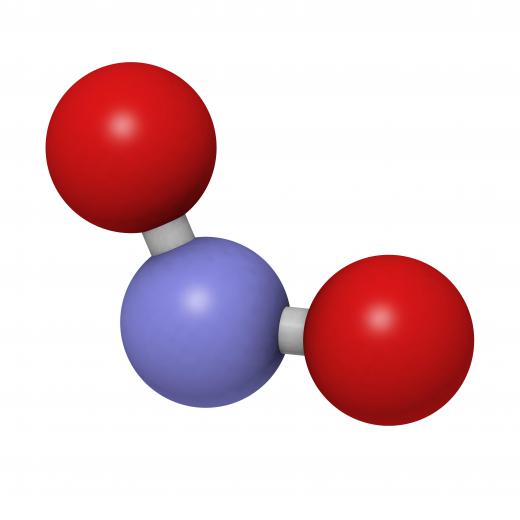What are Chemical Bonds?
 Nicole Madison
Nicole Madison
Chemical bonds are atoms that are held together within molecules or crystals. They form as the result of atoms sharing electrons. They also form from the complete transfer of electrons. The three main types of bonds are ionic, covalent, and polar covalent. Hydrogen bonds are often included under the heading of chemical bonds as well.
Ionic bonds are chemical bonds that are developed from reactions of low electronegativity elements with those that are high electronegativity. In such cases, a complete transfer of electrons takes place. An example of an ionic bond is regular table salt, referred to scientifically as sodium chloride. In forming this chemical bond, sodium transfers its outer shell electron to chlorine. Sodium has just one outer shell electron and chlorine requires just one for its shell.

Covalent chemical bonds are a bit different and usually form between atoms that lack completely filled outer shells. In covalent bonds, electrons are shared fully. These bonds are formed between atoms that are similar in electronegativity. Most organic compounds contain covalent bonds.
Polar covalent chemical bonds are somewhat in between ionic and covalent bonds; the atoms in these chemical bonds share electrons. However, the atoms focus most of their time on one particular atom, rather than others in the same compound. This type of chemical bond forms when atoms are very different in electronegativity. Water is an example of a polar covalent bond; oxygen beats hydrogen in terms of electronegativity. As such, the electrons in water spend more time around oxygen than hydrogen.

In water, the oxygen end of the water molecule features a negative charge while the hydrogen end has a positive charge. This opposite charge results in a powerful electrostatic attraction that is considered a hydrogen bond. This type of chemical bond has an important role in determining critical characteristics of water, vital for living things. However, hydrogen bonds are not limited to water alone. They can occur within other molecules as well.
AS FEATURED ON:
AS FEATURED ON:












Discussion Comments
I am Muhammad T., a school teacher for arts. My daughter is in 9th standard. There is a lack of science education in my area. She sometimes weeps that I don't know chemistry and teachers don't teach her properly. Today, I am on the net and looking up all the questions related to her syllabus.
Thank you very much. You have worked hard making a web site for the students. We have a P-II pc in home. I am copying these notes and then I shall teach them to my daughter.
Thanks a lot for that person who made this web site.
Thanking you again, Muhammad T., Bannu, NWFP, Pakistan.
@ Fiorite- I remember the days of studying ionic and covalent chemical bonds. Ions are organized into two groups: cations and anions. Atoms like to have complete electron shells so some atoms will donate electrons to reduce themselves to a complete electron shell while others prefer to gain electrons to complete an electron shell. When atoms give away or gain electrons they become electronically charged, which creates the electrostatic attraction. Cations will always bond with anions, and the bond always (I think) involves a metal cation and a non-metal anion.
Cations are positively charged, having a tendency to give away electrons because their outer electron shell only has a few electrons. Anions, on the other hand, have empty spaces in their electron shells so they look to gain negatively charged electrons to complete their shells.
When placing them on the periodic table remember this: Anions are on the right, cations are on the left, and noble gases have complete electron shells so they do not form ions.
I am studying chemical bonds between atoms, and I am learning about ionic bonds. How do I know what the charge of an ion is, and how do I know what types of ions bond with other types of ions? Someone please help me.
Post your comments